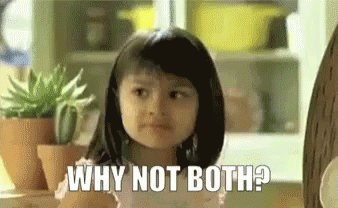Recap of Part 1:
Working from home and virtual applications have lowered the barriers for you to apply anywhere, and for other applicants to compete with you for the attention of the recruiters.
In this series of articles, I am discussing some creative ways to stand out, using a lighthearted tone, but also including some ideas that you can grab and run with.
6- The engineering style: if you build it, they will come
It’s not surprising that in this day and age it is relatively easy to build and train some basic AI to dazzle your recruiters and would-be managers. With a little bit of help from established technologies, you can build a resume bot that interacts with the visitors, delivering information about your background and experience conversationally, as this candidate did. Word of caution: a poorly implemented or poorly trained bot will probably impact your application negatively, so make sure you spend the required amount of time to put our a quality product.
And of course, do not forget to create a Github with the code repository for extra credit.
7- The marketer style: promote yourself
A job search effort can be viewed as not too different from a marketing campaign. You’re trying to sell a product (you) using different marketing collaterals (your resume, your cover letter, etc.), in a way that results compelling for the buyer (the recruiter). There’s plenty of advice out there on how to use marketing techniques to promote your application and stand out. Recently, while doing some user research for a product, one of my interviewees told me that she used a CRM tool to track her applications, which is just brilliant. The processes are quite similar and the tools are therefore quite applicable.
Additionally, you can take a look at some of the most celebrated recruitment campaigns and see if there is an opportunity to use the same technique, but reversed. Can you “recruit” your recruiter? Can you create a campaign to attract the attention of potential recruiters, hiring managers, and would-be colleagues? One word of caution though: don’t be the person cold asking for a referral to a stranger.
8- The total (user) experience: people will never forget how you made them feel
Your resume, and your portfolio, are products that deliver a user experience (hopefully an enjoyable one). Not only you should be aware of good practices and good examples for building these, but also you could spend some extra time thinking about -and describing- exactly what is the type of experience you want to create for your users, what the action triggers you want to use, and take special good care of the UX content you use, both in your resume and cover letter and in all the communications with recruiters, potential colleagues, and managers, etc.
9- The future-driven style: where you’re going, you don’t need roads
Ahhh, crypto, NFTs, and metaverse… Inevitable future or vaporware?
Regardless of your opinion, these are buzzwords that attract attention AND they are an area ripe for experimentation. From NFT resumes to immersive metaverse CV experiences, to blockchain-authenticated applications that are tamper-proof and digital credentials for your skills, there’s a lot you can add to your resume, to give it that high-tech gloss.
Of course, there’s always somebody that takes the advice to go high-tech a step too far.
10- The creative style: art as a window to your soul
Maybe you have artistic inclinations. Maybe you can try the resume song idea that landed Page Kemna a job at Zoom. Maybe you are a talented illustrator who can create a high-impact visual resume or a compelling video resume in the shape of a short story (there are tools for that like Biteable).
I’d recommend doing some tests of your artistic resume with your intended audience. No, not your granma, she loves everything you do. Try a recruiter friend instead to get a feeling of whether your artistic efforts are making you shine or fall flat.
Enjoying the list so far? Finding some worthwhile ideas to explore?
Follow me for more ideas on resume styles in Part 3.



